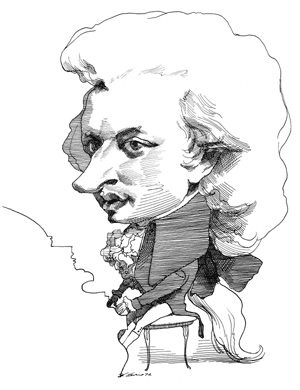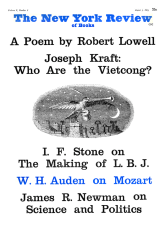An unbook, unwritten by, it would seem, an anal madman. I say madman because the theory of Truth presupposed by such an undertaking as this is insane, namely: 1) Truth resides in objects, the objects in this case being pieces of paper with words and figures written on them, among which, somewhere or other the name Mozart appears; 2) there is no other truth but these; 3) to think, that is to say, to compare one object with another, to ask their value and meaning, is to falsify. The only function of the human mind is, as it were, to photograph the objects which the hand has succeeded in collecting.
Mr. Deutsch must have had the time of his life. Every morning, year after year, he has known exactly what he had to do during the coming day: such and such a library had to be visited, such and such a document accurately transcribed, in an idle bliss, unburdened by the slightest mental effort.
By the law of Probability, such senseless industry, if pursued over a long enough period, can hardly fail to unearth some new documents of genuine interest. For instance, I never knew before that, as a child, Mozart was terrified by the sound of the trumpet, or that, in later life, he disliked both the flute and the harp. But why, for the sake of a few nuggets, should any reader be expected to sift through tons of detritus like this:
FROM ABBOT BEDA SEEAUER’S DIARY, SALZBURG, 24 APRIL 1775
In the evening, at the party, the Prince himself condescended to fiddle violina 2do, and many of the high nobility utrius Sexus, with the gracious Lord himself in capite, as it happens almost every day, proved their skill in the art of music.
Salzburg Archives of St. Peter’s—communicated by Dr. Herbert Klein. (page 153)
FROM THE WIENER ZEITUNG 15 JANUARY 1791
At Franz Anton Hoffmeister’s, art and book dealer in the Wollzeile, No. 803, next the Schwebbogen, the following new music is to be had, finely and correctly copied:
Dance Music.
Mozart, 6 German Dances from the I & R Assembly Room, full parts. 1 fl. 40 Kr. (page 385)/blockquote>
FROM ZINZENDORE’S DIARY, 2 JANUARY 1793 (in French)
…In the evening to Pesse Schwarzenberg, thence to old Princesse Colloredo, which caused me to miss Mozart’s requiem.
Köchel/Einstein, p. 811—The Princess Schwarzenberg was probably Maria Eleonora, the widow of Prince Johann Nepomuk (see November (1788); Princess Colloredo was Marie Gabriele, the window of Prince Rudolph (see 11 October 1762 and later). (page 467)
What such an identification of fact with truth leads to when applied to the arts, by now, alas, we know all too well. The work of art as a random happening, which neither the artist or the public are expected to interpret or judge; all they can do is register that it has occurred. Mozart thought and created otherwise. That such a compilation as this should have been made is not surprising—obsessive collectors have existed in all ages—but that it should have found both publishers and translators is an alarming symptom of a grave cultural disease.
This Issue
August 5, 1965




